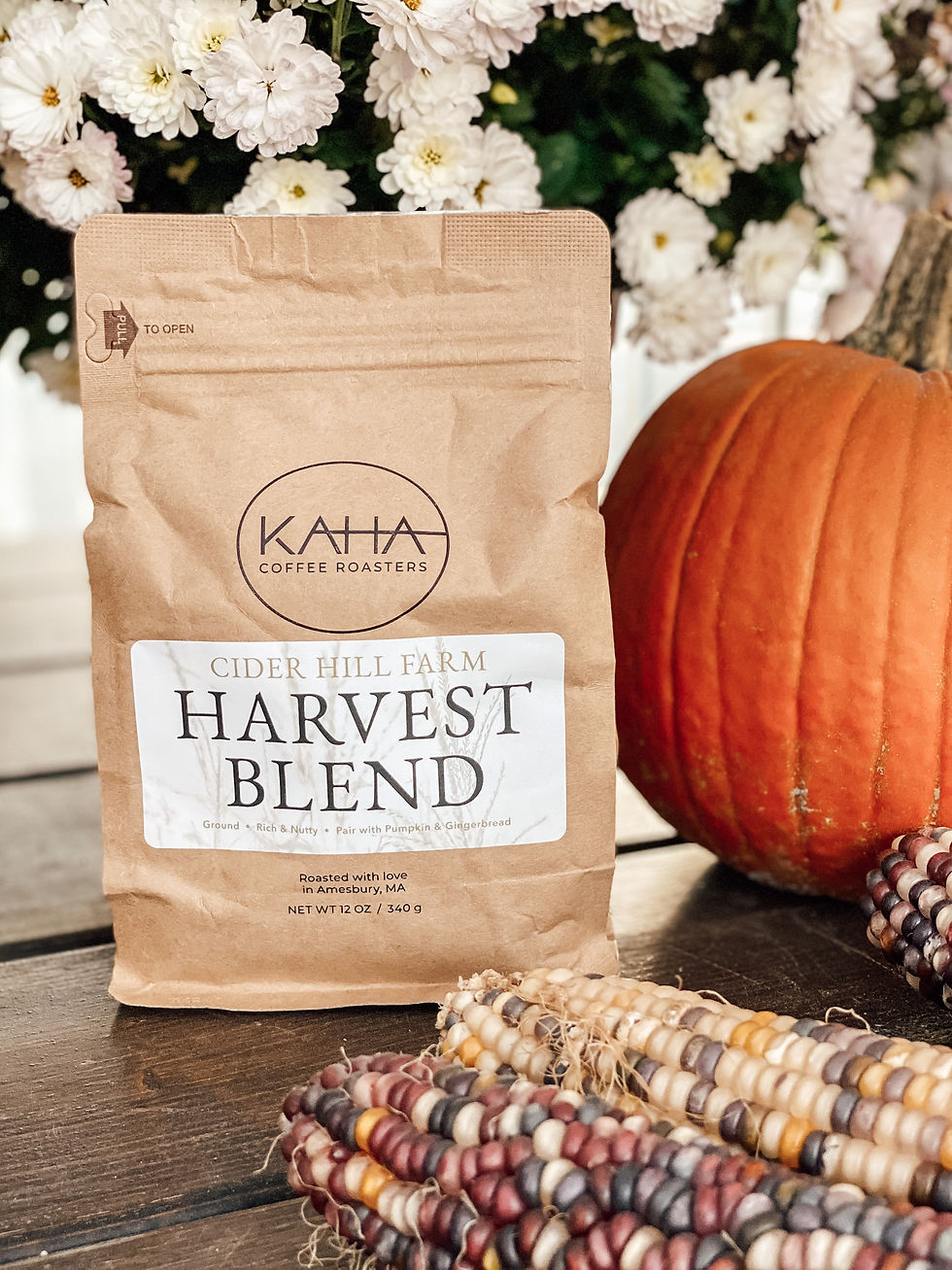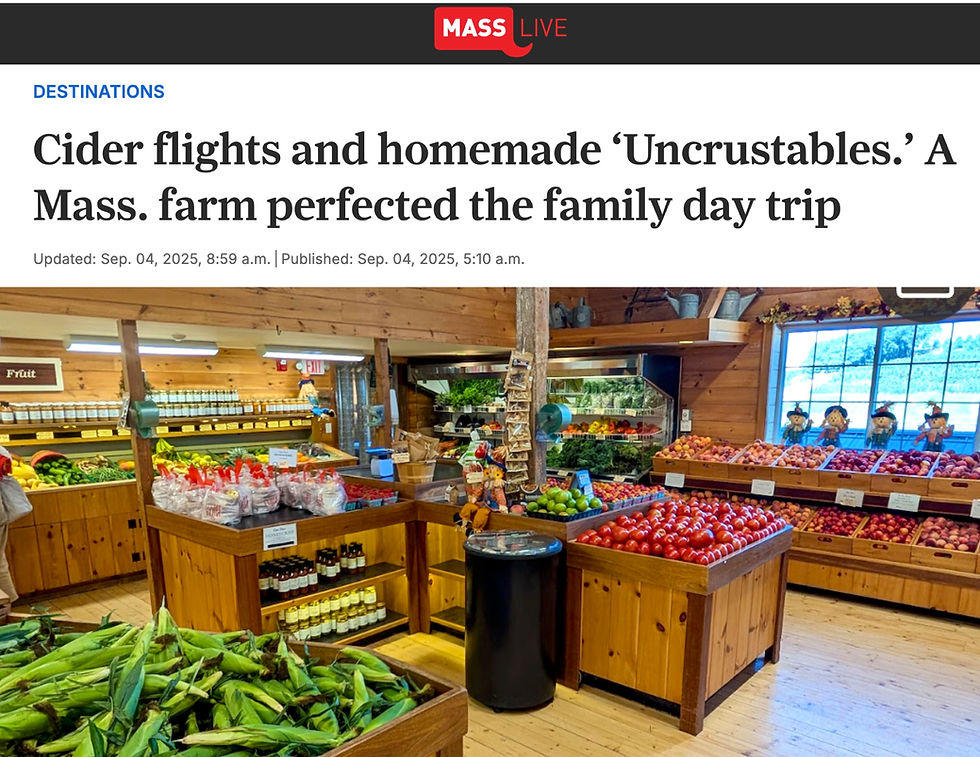Cider Hill Farm Blend & Harvest Blend Brew Guide
- admin.ciderhill

- Sep 20, 2023
- 4 min read
Hi, I am Tyler, the founder of Kaha Coffee Roasters, located in Amesbury and just minutes from Cider Hill Farm. We work together with Cider Hill to bring you the Cider Hill Farm Blend and the Harvest Blend. Both of these blends offer full, robust flavors with no bitterness and have been roasted and blended to pair very well with the cider donuts made and sold at the Farm Store.
You may have met me at one of the pop-up events held on the farm. One of the big benefits of doing these pop-up events is the chance to speak directly with you and answer all of your questions about our collaboration and the coffee itself. By far, the most common questions I receive are related to the brewing of these blends and how to get the most out of these coffees. I have put together a best practice guide that will aid you in getting the very best out of both the Cider Hill Farm Blend and the Harvest Blend. I have decided to put this guide together in a bullet point format, so you can go down the list methodically. The purpose of this guide is not to cover specifics about the brew methods as there are far too many to cover, but to act as a framework to get you on the right path to brewing amazing coffee.

Best Practice Brew Guide
The very first thing you should do is to make sure all your coffee grinding and brewing equipment is clean. Dirty equipment can impart negative flavors into your coffee.
No matter what brew method you choose, you should always start with a good coffee to water ratio. I recommend starting with a 1:16 ratio. That means for every 1 gram of coffee, you would want to use 16 grams of water. You can now adjust this ratio based on your strength preference. If you like strong coffee, I recommend a 1:14 ratio and a 1:18 ratio if you like your coffee more on the mild side. Using scales to weigh out your coffee and water can really help take the guess work out of brewing coffee and ensure a consistent cup of coffee every time.
Use filtered water for brewing. Do not use distilled water. I get a good result from Poland Spring water. The type of water you use can drastically change the taste of coffee and more often than not, tap water is negatively affecting your coffee’s flavor.
Pre-heat all of your brewing equipment. This will help with thermal stability which positively affects the flavor of your coffee, and it will help keep your coffee hotter for longer. Win Win!
Rinse out your coffee filters. Most filters have a slight papery taste that can come through in the coffee – some much worse than others. Use a bit of hot water to rinse them out.
Make sure your brew water is not too hot. I have found that both of these blends respond well to a brewing temperature of 190F. More sweetness and chocolate notes come out at this temperature. If you don’t have a way of measuring this, I recommend leaving your water for one minute after it boils. This will allow it to cool down a bit and reach 190F.
Bloom your coffee. If you have the ability to pour just enough of your brew water to saturate the coffee grounds for about 45 seconds before you start your regular brewing practices. This will release a lot of trapped gas in the coffee caused by the roasting process and allow the water to extract more flavors from the coffee. Some of the more modern automatic brewers offer this as a feature you can select.
If you are using a grinder to grind your coffee, please use only a burr grinder. Do not use a blade grinder. A blade grinder will give you an extremely uneven particle size and the results when brewing are likely everything from bitterness to astringency. Please only use a burr grinder.
If you are grinding this coffee, I recommend a particle size resembling that of table salt for all filter brewing with the exception being French Press and Cold Brew. For that I recommend a grind size resembling that of cracked pepper.
Last but not least, have fun! This is just a best practice guide, but coffee is a subjective experience and I highly encourage experimenting with all the above once you become comfortable to do so. Changing just one of these variables like grind size, brew temp or ratio can change the flavor characteristics and body of your coffee dramatically.
Thank you for reading this post. Coffee is a big passion of mine and the more people brewing and enjoying great coffee is a win in my book! There is a lot to unpack here, and I can understand if you have further questions. If you have any questions, I would love to hear from you. You can reach me at tyler@kahacoffee.com or if you would like to read about how I got my start in the coffee industry, please click here.






